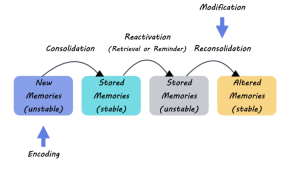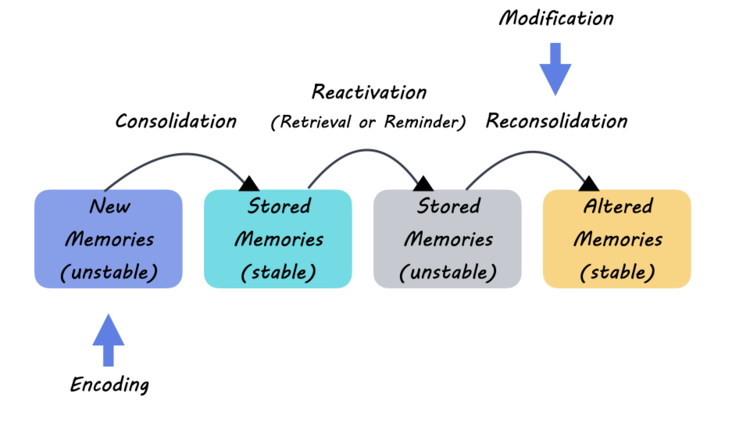Pediatric cancer recurrence prediction is an emerging frontier in the battle against childhood cancers, particularly in patients with gliomas. Recent advancements in AI technology have revolutionized how healthcare professionals assess the relapse risk in young patients, offering a level of accuracy that traditional methods struggle to achieve. By utilizing machine learning cancer prediction techniques, researchers have developed innovative tools that analyze time-sequenced brain scans, improving pediatric brain tumor prognosis significantly. This shift toward predictive analytics in healthcare underscores the critical need for effective monitoring of children post-treatment, as early detection of potential relapses can lead to timely interventions. With these advancements, the painful experience of repeated imaging can be minimized, benefiting children and their families alike.
In the realm of childhood oncology, the assessment of cancer reoccurrence is crucial for effective patient management, especially concerning various brain tumors like gliomas. The integration of artificial intelligence in oncology is paving the way for more sophisticated models of predicting when a cancer may return, making traditional strategies look outdated. These new predictive tools leverage vast amounts of imaging data to forecast relapse risk, thus enhancing the prognosis for pediatric patients. By harnessing machine learning techniques, healthcare providers can shift from reactive to proactive approaches in monitoring their young patients. Such innovation is not just a scientific leap; it represents hope for children and families facing the daunting prospects of cancer recurrence.
Understanding Pediatric Cancer Recurrence Prediction
Pediatric cancer recurrence prediction is a critical area of research that aims to identify which young patients are most at risk of experiencing a relapse. Traditional methods often fall short due to their reliance on single imaging scans, which provide limited information regarding the progression of the disease. With the advent of advanced AI technologies, we’re now able to analyze multiple brain scans over time, greatly enhancing our capacity to predict the risk of recurrence in pediatric glioma patients. This predictive capability is essential for tailoring treatment strategies that can mitigate the impact of potential relapses.
AI in pediatric oncology marks a significant advancement in clinical medicine, harnessing the power of machine learning to analyze vast datasets of medical imaging. By employing temporal learning techniques, researchers are now able to synthesize findings from multiple scans taken over several months, leading to more accurate predictions of glioma relapse risk. This innovative approach not only boosts prediction accuracy but also holds the promise of alleviating the psychological and logistical burdens associated with frequent imaging procedures for families and children.
The Role of AI in Pediatric Oncology
Artificial Intelligence (AI) is revolutionizing pediatric oncology by providing innovative solutions for cancer prediction and treatment monitoring. In the context of glioma, AI tools developed through machine learning have demonstrated superior efficacy compared to traditional imaging methods. By analyzing numerous MRIs from pediatric patients, AI can detect subtle changes over time within the tumors, informing healthcare providers of potential relapse much earlier than previously possible. This advancement enables clinicians to implement timely and targeted therapies, optimizing patient outcomes.
Furthermore, the integration of predictive analytics in healthcare signifies a fundamental shift towards data-driven decision-making in pediatric oncology. Instead of following a one-size-fits-all treatment approach, AI allows for personalized medicine that caters specifically to an individual child’s condition. As we continue to refine these technologies, the hope is that we can significantly improve pediatric brain tumor prognosis and ultimately enhance the quality of life for young cancer survivors.
Machine Learning Techniques in Cancer Prediction
Machine learning is at the forefront of improving cancer prediction accuracy, particularly in pediatric populations where the stakes are high. The recent study illustrates how a novel temporal learning model can leverage historical data from successive imaging scans to predict glioma relapse risk. This approach contrasts sharply with conventional models, which often consider only a snapshot of the disease. By recognizing patterns across time, machine learning algorithms can provide insights that are pivotal in deciding treatment paths tailored to the patient’s evolving status.
Incorporating machine learning into everyday clinical practice for pediatric oncology may lead not only to better early detection but also to smarter disease management strategies. By identifying patients at a higher risk of recurrence earlier, healthcare professionals can initiate preemptive measures, such as adjusting imaging frequency or employing adjuvant therapies sooner. The implications of these advancements in predictive modeling are vast, potentially reducing not only recurrence rates but also the burden of repeated interventions on patients and their families.
The Future of Predictive Analytics in Healthcare
The future of predictive analytics in healthcare, particularly for pediatric oncology, appears promising as technology continues to evolve. Innovations such as the AI-driven temporal learning model exemplify how machine learning can be harnessed to improve patient care outcomes significantly. As more research confirms the reliability of these tools, we anticipate a shift towards integrating AI solutions in clinical workflows, which could redefine treatment paradigms for pediatric cancer patients.
Moreover, the potential to personalize care based on enhanced predictive abilities could bridge the gap between standard treatments and tailored therapies. This evolution not only maximizes resource utilization but also improves patient satisfaction and treatment adherence, as families can take a proactive role in managing their child’s health based on informed predictions. Ultimately, the adoption of predictive analytics in healthcare may pave the way for a future where childhood cancer interventions are more targeted, efficient, and humane.
Challenges and Considerations in AI Implementation
While the integration of AI in pediatric oncology presents exciting opportunities, it also comes with its challenges. One of the primary concerns centers around the validation of AI models across diverse clinical settings. The recent study demonstrated promising results, but further research is necessary to ensure that these tools perform consistently across varying populations and healthcare systems. Additionally, there remain legal and ethical considerations regarding the use of AI in clinical decisions, particularly when it involves vulnerable populations like children.
Moreover, there is a need for clinicians and healthcare administrators to develop a comprehensive understanding of AI capabilities to leverage these tools effectively. Continuous education and training are essential to ensure that healthcare providers can interpret AI-generated predictions and incorporate them into their clinical decision-making processes. As we navigate these complexities, it is crucial to maintain an open dialogue among researchers, practitioners, and regulatory bodies to create frameworks that support the ethical use of AI in pediatric oncology.
Temporal Learning as a Breakthrough in Imaging Analysis
Temporal learning represents a significant breakthrough in the analysis of medical imaging, particularly in pediatric oncology. Unlike traditional AI models that analyze single, isolated images, temporal learning uses a series of scans to discern patterns that could indicate disease progression or recurrence. This innovative approach allows healthcare providers to detect changes that may not be visible in a single image, thereby enhancing the precision of cancer recurrence predictions.
As illustrated by the results from recent studies, this technique’s ability to predict glioma relapse risk with accuracy rates between 75-89% demonstrates its transformative potential. Such accuracy not only aids in timely medical decision-making but also reduces unnecessary stress for families, who often endure the anxiety associated with frequent imaging. With continued advancements in temporal learning and AI application, the future looks bright for improving pediatric brain tumor prognosis and patient management.
Impact of AI on Treatment Protocols for Pediatric Gliomas
The implementation of AI technology in treatment protocols for pediatric gliomas could lead to a paradigm shift in how these tumors are managed. Current treatment regimens often mandate consistent imaging to monitor potential recurrences, causing distress to patients and their families. By employing AI-driven predictive models, clinicians could streamline this process, reducing the frequency of imaging for patients classified as low risk while ensuring high-risk patients receive timely and aggressive treatment.
This reimagining of treatment protocols, supported by predictive analytics, could free healthcare resources and allow for a more targeted approach to therapy. Implementing such strategies might improve the overall prognosis for pediatric patients and lead to more favorable long-term outcomes. As researchers further refine AI tools, it will be vital to translate these innovations into clinical guidelines and practice, ensuring they reach the families and children who need them most.
AI Models in Longitudinal Imaging Studies
AI models that analyze longitudinal imaging studies are becoming a focal point in pediatric oncology research. By observing trends over time rather than relying on sporadic, isolated images, these models can offer insights into the progression of gliomas and other pediatric tumors. This shift not only enhances prediction accuracy but also provides a more comprehensive look at a child’s health status, facilitating informed decisions about potential interventions.
Longitudinal studies using AI could potentially redefine how healthcare providers assess treatment efficacy and disease progression. By effectively synthesizing data from multiple points in a patient’s treatment timeline, AI can identify patterns and predict outcomes that were previously difficult to ascertain. This thorough analysis is crucial for developing personalized treatment plans that cater to the individual needs of pediatric patients facing the challenges of brain tumors.
Conclusion: The Drive Towards Better Pediatric Cancer Care
In conclusion, the integration of advanced AI tools in pediatric oncology, particularly for predicting cancer recurrence, marks a significant leap forward. By utilizing techniques like temporal learning, healthcare providers can enhance the accuracy of relapse predictions, paving the way for more personalized and effective treatment strategies. As research continues to validate these models, there is great potential for shifting current paradigms in pediatric cancer care.
As we move closer to realizing the full potential of machine learning and AI in healthcare, it is paramount that we continue to advocate for their adoption in clinical practice. By embracing these technologies, we not only stand to improve pediatric brain tumor prognosis but also significantly enhance the quality of life for young cancer patients and their families, ensuring they receive the best possible care tailored to their specific needs.
Frequently Asked Questions
How does AI in pediatric oncology improve pediatric cancer recurrence prediction?
AI in pediatric oncology enhances pediatric cancer recurrence prediction by utilizing advanced algorithms to analyze longitudinal data from multiple brain scans. This approach, specifically through techniques like temporal learning, allows for a more accurate assessment of recurrence risks compared to traditional single-scan methods.
What is the role of machine learning in predicting the risk of glioma relapse in pediatric patients?
Machine learning plays a crucial role in predicting glioma relapse risk in pediatric patients by identifying patterns in complex data sets. The AI models trained on sequences of brain scans can detect subtle changes over time, resulting in a significant improvement in predicting recurrence risk associated with pediatric brain tumors.
What are the advantages of predictive analytics in healthcare for pediatric brain tumor prognosis?
Predictive analytics in healthcare offers notable advantages for pediatric brain tumor prognosis by providing tailored assessments of tumor behavior and recurrence. By leveraging AI tools, clinicians can better stratify patients based on their risk levels, allowing for personalized follow-up care and intervention strategies.
How accurate are AI predictions for glioma recurrence in children?
Recent studies indicate that AI models utilizing temporal learning can predict glioma recurrence with an accuracy range of 75-89%, outperforming conventional methods that yield about 50% accuracy. This impressive accuracy underscores the potential of AI in improving outcomes for pediatric cancer patients.
What does the research say about the effectiveness of AI tools in pediatric oncology?
Research shows that AI tools are effective in pediatric oncology, particularly in predicting cancer recurrence. A study demonstrated that AI analyzing multiple MR scans over time provided significantly better predictions of relapse risks for pediatric patients with gliomas, suggesting a shift towards incorporating AI in clinical practices.
Can AI help in reducing the burden of follow-up imaging for low-risk pediatric cancer patients?
Yes, AI has the potential to reduce the burden of follow-up imaging for low-risk pediatric cancer patients by accurately identifying those at minimal risk of recurrence. This could lead to decreased frequency of MRI scans, minimizing stress for patients and their families.
What future developments are expected in AI applications for pediatric cancer prediction?
Future developments in AI applications for pediatric cancer prediction may include the initiation of clinical trials to validate AI-informed risk predictions. These advancements aim to optimize care strategies by targeting interventions based on individual risk factors identified through predictive modeling.
How is temporal learning utilized in machine learning cancer prediction for pediatric gliomas?
Temporal learning is utilized in machine learning cancer prediction for pediatric gliomas by sequencing post-surgery brain scans chronologically. This allows AI models to recognize changes over time and associate them with recurrence risk, leading to improved prediction accuracy.
| Key Points | Details |
|---|---|
| AI Predictive Model | An AI tool outperformed traditional methods in predicting relapse in pediatric cancer patients. |
| Study Background | The study involved nearly 4,000 MR scans from 715 patients, aiming to identify recurrence risk early. |
| Methodology | Utilized ‘temporal learning’ to analyze multiple scans over time, rather than single scans. |
| Prediction Accuracy | The model achieved 75-89% accuracy in predicting recurrence at one year post-treatment. |
| Future Implications | Potential for clinical trials aimed at reducing imaging frequency or applying pre-emptive treatments. |
Summary
Pediatric cancer recurrence prediction is significantly enhanced through the use of an AI tool that analyzes multiple brain scans over time. This innovative approach allows for better risk assessment, potentially leading to improved treatment strategies and care for young patients battling gliomas. By leveraging advanced techniques like temporal learning, the study highlights the promise of AI in healthcare and the future of pediatric oncology management.






